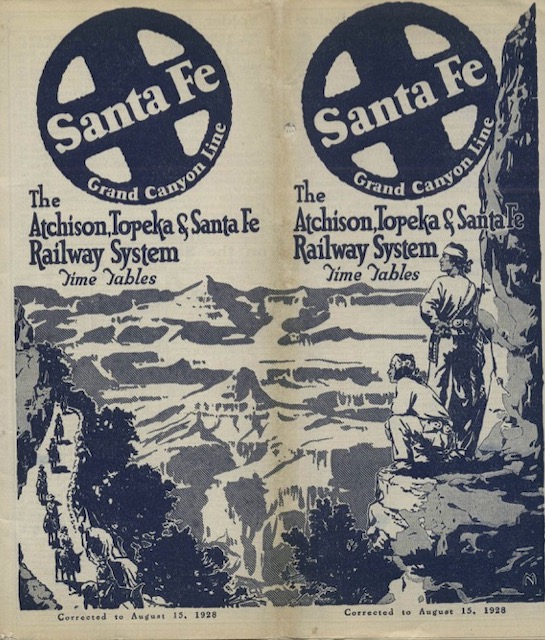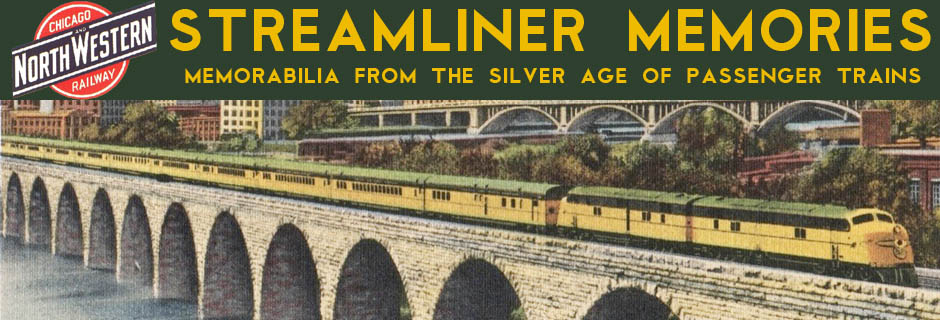Ten months after the release of yesterday’s timetable, Santa Fe introduced the Chief (trains 19 & 20), its new, faster, premiere train. It made its first run on November 14, 1926, and as this timetable shows, the California Limited is still on the timetable, but it isn’t as fast. Where the California Limited required 68 hours, or three nights and most of three days, the Chief‘s 63 hours could be done in three nights but only two days, thus allowing more daylight time at the destination.
 Click image to download a 38.1-MB PDF of this 64-page timetable.
Click image to download a 38.1-MB PDF of this 64-page timetable.
On the same day, Union Pacific speeded up its Los Angeles Limited and Overland Limited and Southern Pacific speeded up the Golden State Limited to 63-hour schedules, but the Santa Fe upstaged them by introducing a new train name. Not only were the California Limited, Navajo, Scout, and Missionary still on its timetable, the California Limited was so popular that it ran a second train of that name (23 & 24) an hour later westbound and two hours later eastbound.
This meant Santa Fe had six daily trains between Chicago and Los Angeles, which was three more than Union Pacific. (UP also offered a mail train westbound only, and it had a Pullman sleeper only as far west as Cheyenne.)
Why did Santa Fe have so many trains, four of which departed Chicago in a three-hour period between 8:00 pm and 11:00 pm? One answer is that it served two slightly different routes, one through Albuquerque and one through Amarillo. But the three trains that left Chicago between 8:00 pm and 9:15 pm all went through Albuquerque, which was the favored route for tourists. I suspect the real answer is that more trains allowed greater differentiation of service to a wide range of customers.
Instead of promoting the Grand Canyon, the back cover of this timetable advertises the Indian detour, trips in “Harvey cars” to Indian pueblos in New Mexico. This ad mentions two alternative trips, one to Taos and the other to Santa Fe, several Indian pueblos, and the Puyé cliff dwellings.
